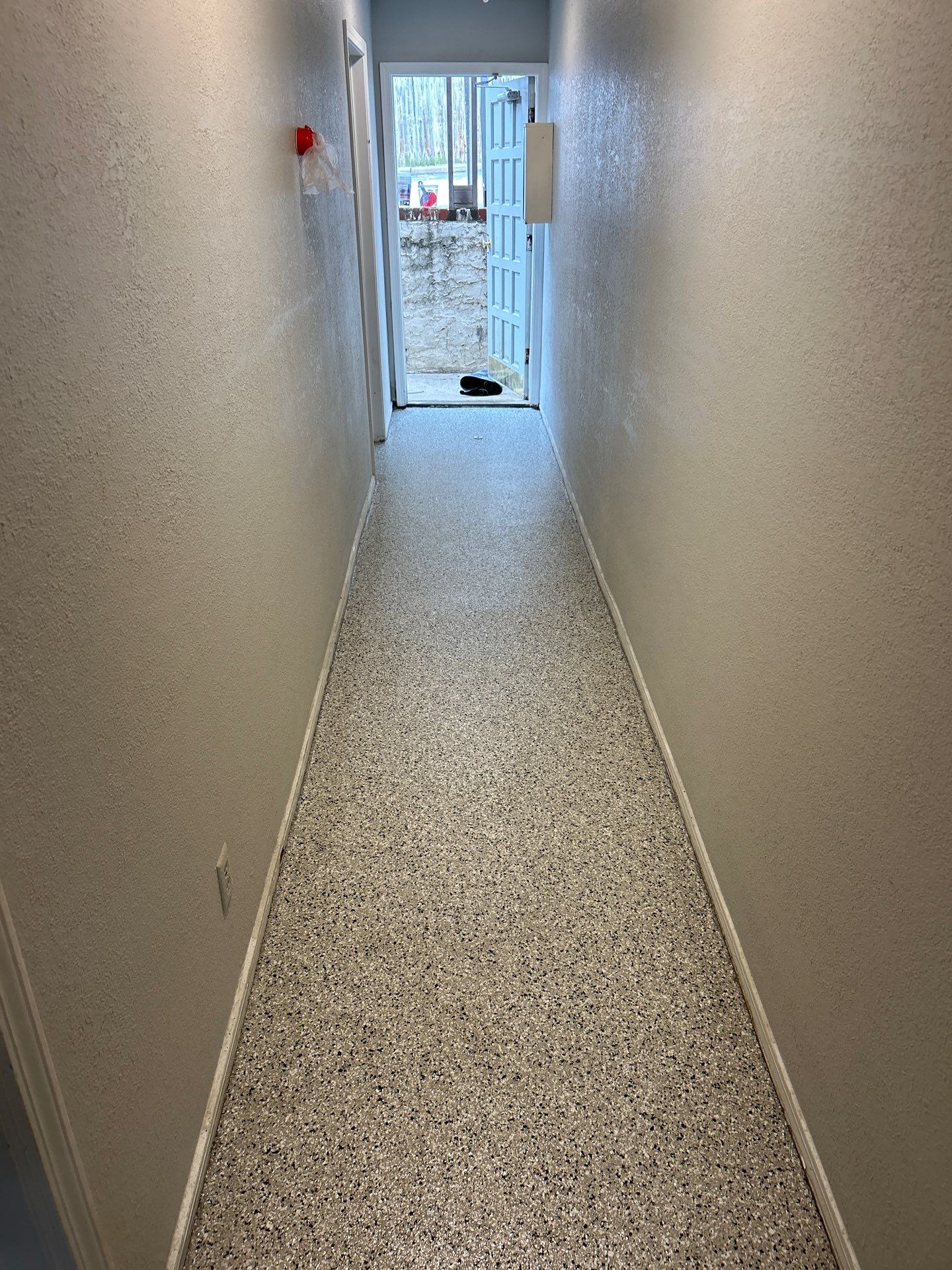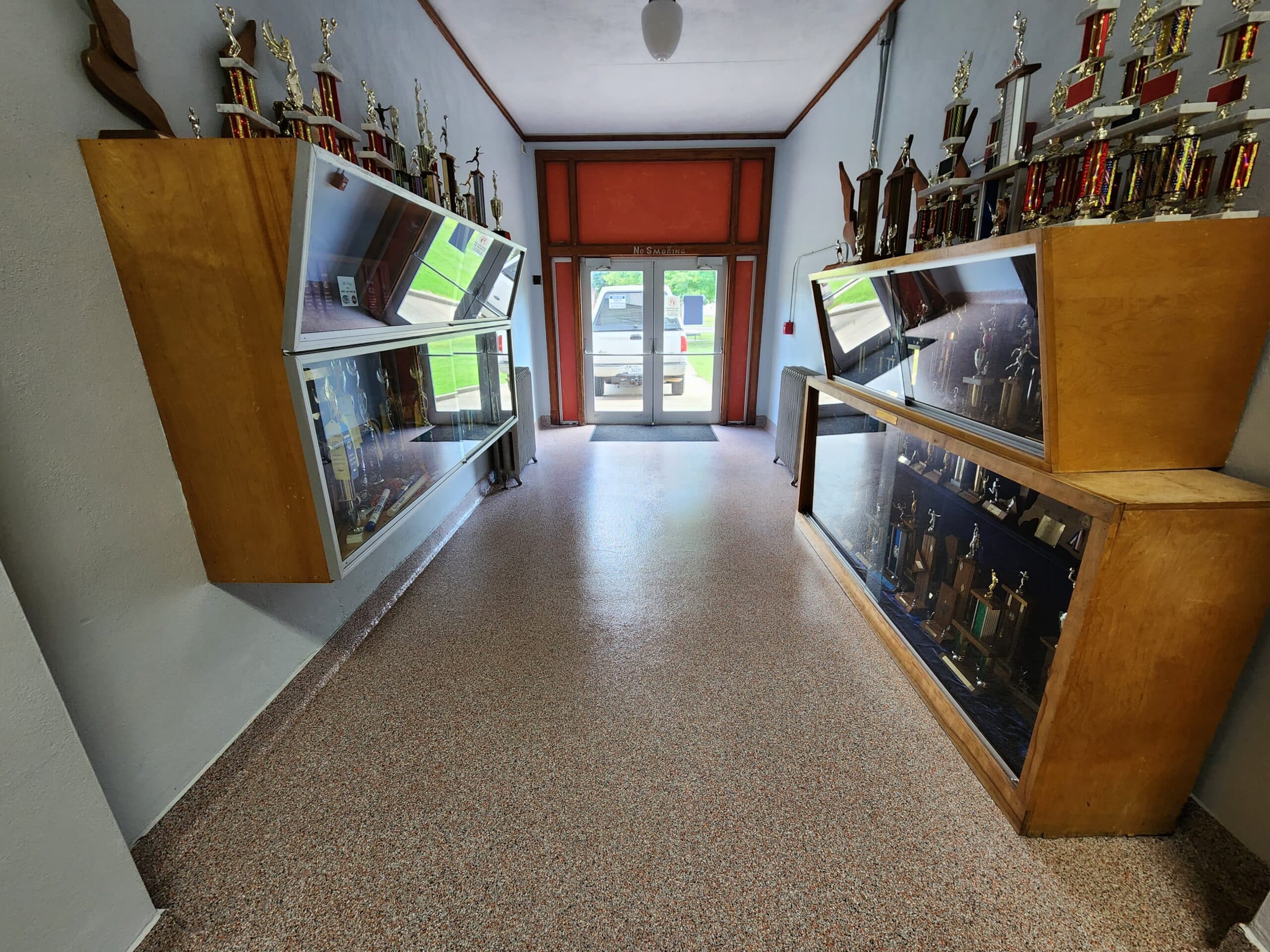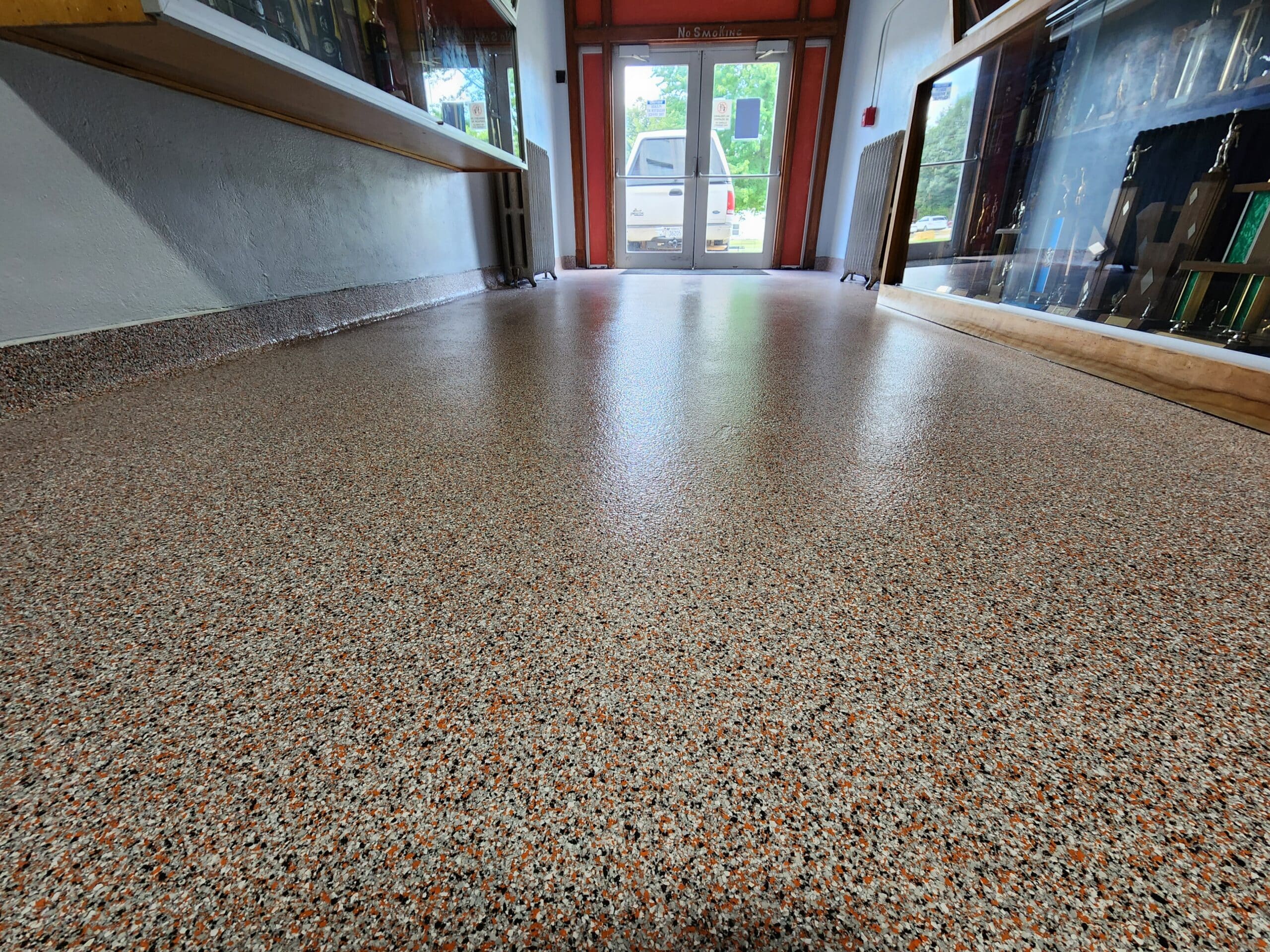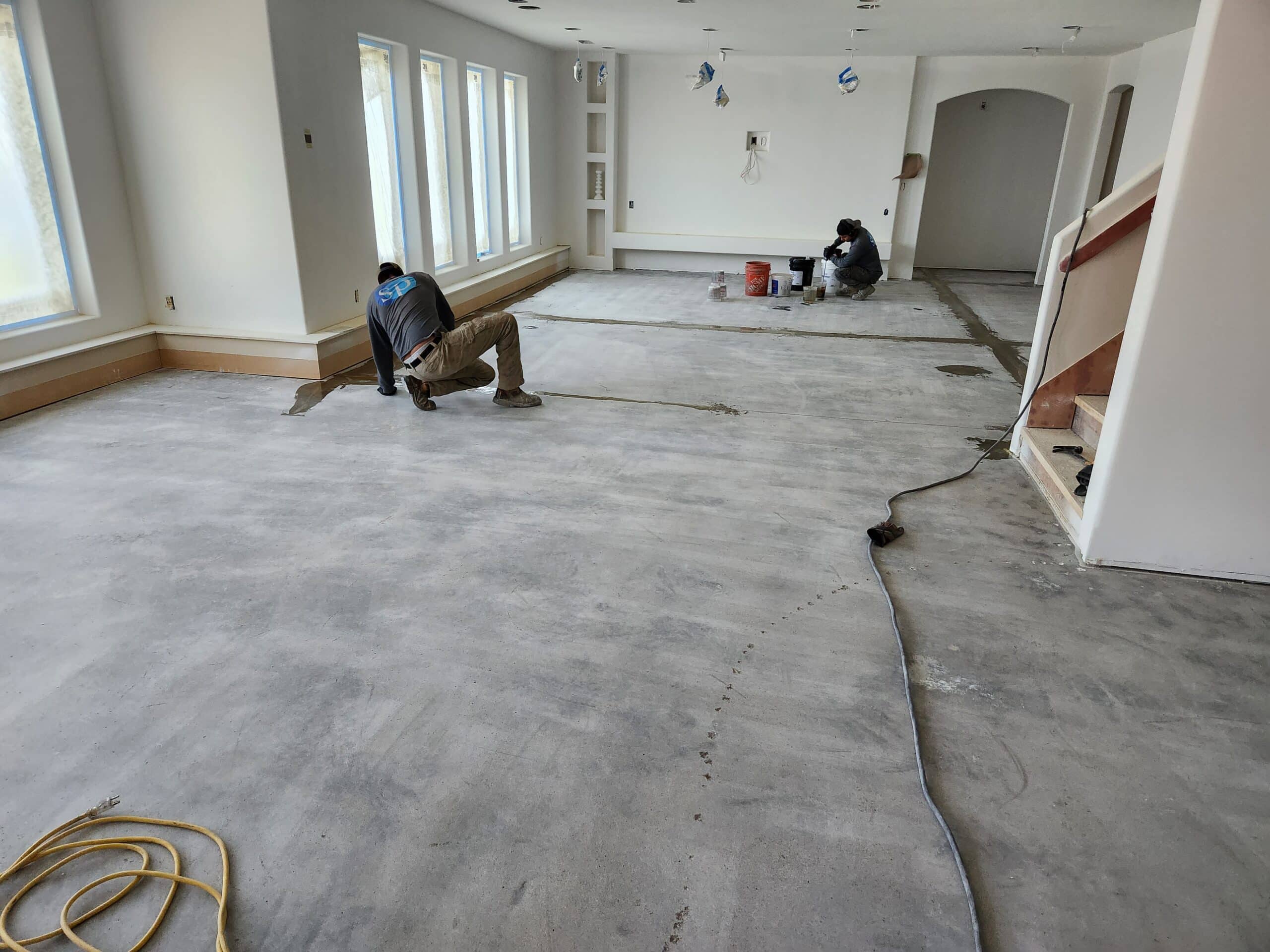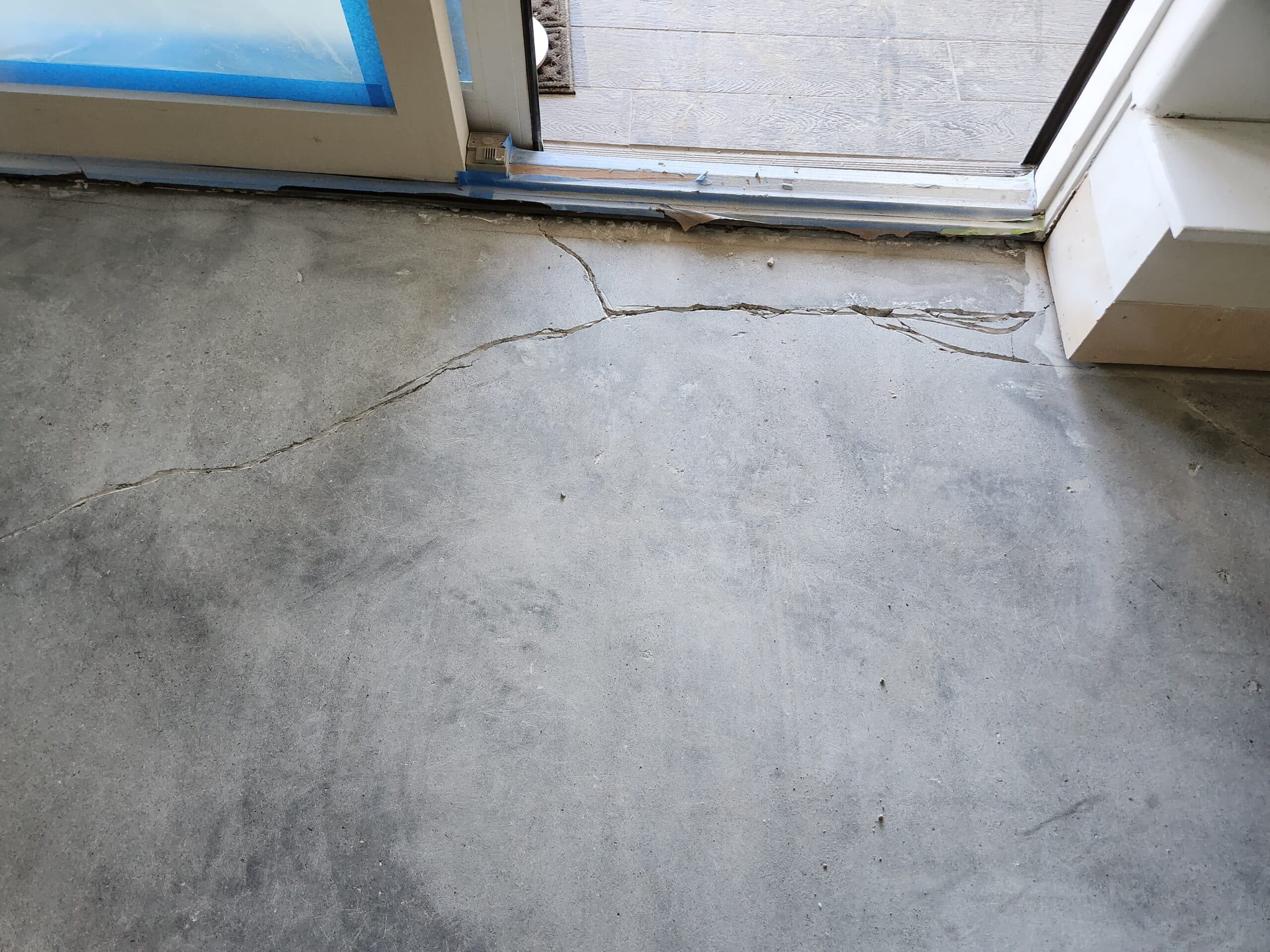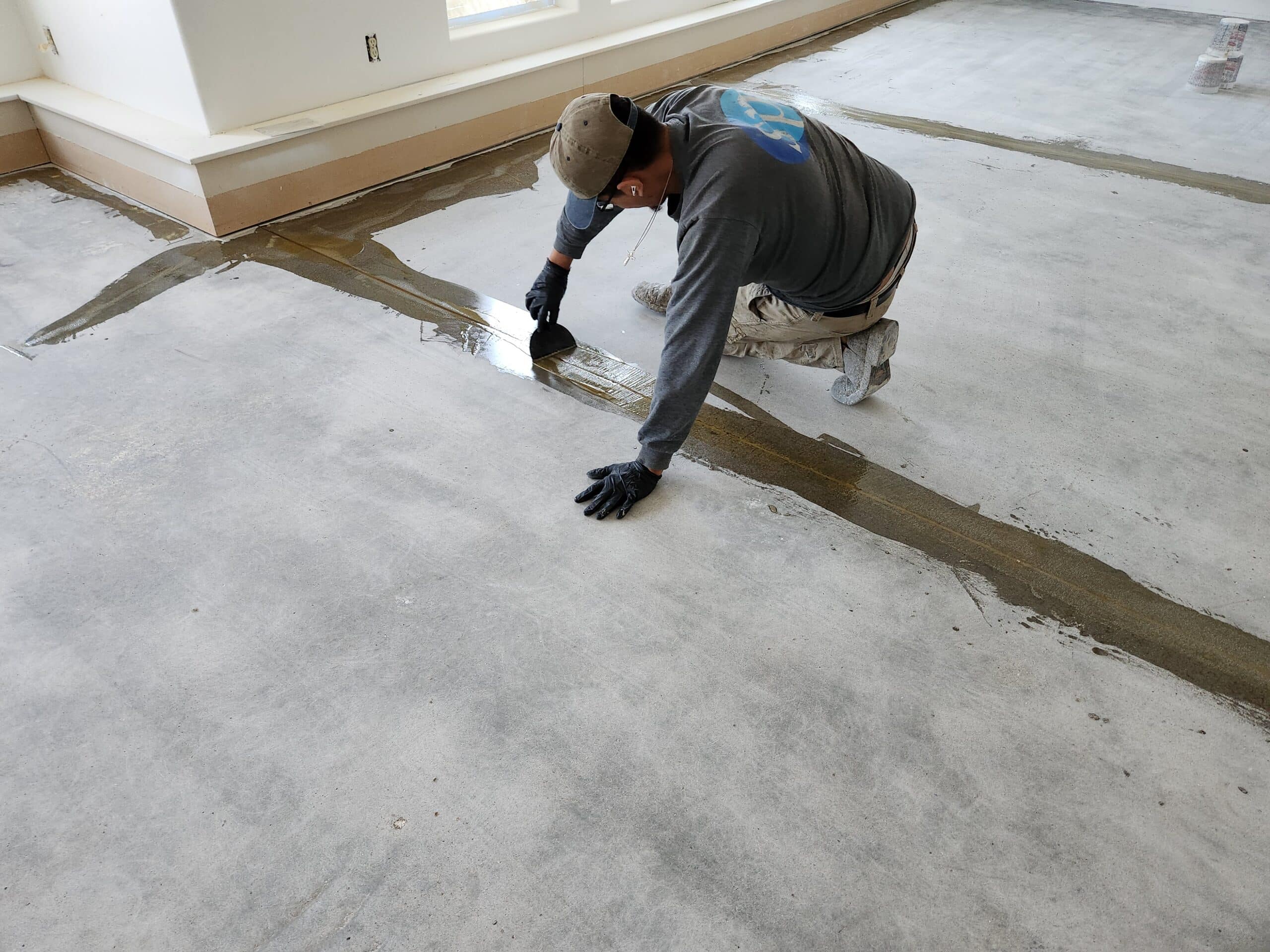Yes — moisture mitigation is almost always necessary before coating concrete. It’s not just a safety step; it’s a performance guarantee.
In both residential and commercial settings, concrete is naturally porous. That means it absorbs, holds, and transmits water vapor from the ground or air. When that vapor pushes through to the surface under a coating, the results can be disastrous — bubbling, peeling, delamination, or complete coating failure.
At Select Coatings, our Interior Floor Coatings team in Olathe, KS has seen this countless times: an epoxy floor that looked perfect on day one but began to blister within weeks because moisture mitigation was skipped.
The right solution depends on the concrete’s moisture content, the building’s environment, and the coating system you’re using. But one thing is consistent — moisture testing and mitigation always come first.
Key Takeaways
-
Trapped moisture in concrete is a leading cause of coating failure.
-
Even new slabs can retain vapor long after they appear dry.
-
Proper testing (RH, calcium chloride, or in-situ probe) determines if mitigation is needed.
-
Moisture vapor barriers and epoxy moisture-control primers prevent failure before it starts.
-
Professional coating contractors never coat concrete without a moisture assessment.
Why Moisture Matters So Much in Concrete Coating
Concrete is a living, breathing material — not in the biological sense, but in how it exchanges moisture with its surroundings. It constantly absorbs and releases water through its pores.
The Science Behind It
When vapor rises from the ground or humidity builds beneath the slab, it travels upward. A floor coating acts like a vapor retarder. If that vapor can’t escape, pressure builds under the film, leading to hydrostatic pressure and osmotic blistering. Over time, these forces lift the coating off the surface.
Alkalinity can also increase under these conditions. Water carrying soluble salts migrates through concrete pores and reacts with the coating’s binder, weakening adhesion.
Product Integration
Modern coating systems address these issues directly:
-
Sherwin-Williams ArmorSeal 1000HS Epoxy – heavy-duty, chemical-resistant coating that pairs with vapor barriers for moisture control.
-
Sika MB Moisture Barrier – a proven epoxy primer formulated to block vapor emissions before epoxy installation.
-
Tnemec Series 208 Epoxoprime – designed for use beneath decorative and industrial coatings to handle vapor drive.
Fact: Most coating manufacturers require moisture emission rates below 3 lbs/1000 ft²/24 hr (ASTM F1869) or ≤75% RH (ASTM F2170). Anything higher requires moisture mitigation before coating.
Understanding Moisture Mitigation: What It Actually Is
Moisture mitigation is not about drying concrete — it’s about controlling vapor movement. It’s a set of procedures and materials designed to block or reduce water vapor transmission through a slab before applying coatings or floor systems.
It includes:
-
Moisture testing to quantify vapor emissions.
-
Surface preparation such as grinding or shot-blasting to create an open, bondable surface.
-
Application of moisture-control primers or barriers made from 100% solids epoxy or urethane.
In essence, moisture mitigation ensures that the coating bonds to stable, dry concrete — not to water trying to escape.
When You Really Need Moisture Mitigation
A. New Concrete Slabs
Concrete continues to release moisture long after curing. Even after 28 days, a new slab can still exceed acceptable moisture limits. Applying epoxy or polyurethane coatings too early traps vapor beneath, leading to future failure.
B. Below-Grade or On-Grade Slabs
Ground moisture is a constant source of vapor pressure. If no vapor barrier was installed beneath the slab — a common issue in older buildings — that moisture will migrate upward indefinitely.
C. High-Humidity or Coastal Environments
Humidity adds to vapor drive. In areas with humid air or high dew points, concrete absorbs atmospheric moisture, making moisture mitigation essential before coating.
D. Renovations Over Old Slabs
Old floors often have hidden issues. When previous flooring or coatings are removed, trapped moisture can suddenly escape, destabilizing new finishes. In these cases, mitigation is not optional — it’s mandatory.
When You Might Skip Moisture Mitigation (With Caution)
There are rare situations where moisture mitigation may not be necessary:
-
The concrete passes all moisture emission tests (≤75% RH or ≤3 lbs/1000 ft²/24 hr).
-
The area is climate-controlled and humidity-stable.
-
You’re using a moisture-tolerant or breathable coating system such as PPG Aquapon WB Epoxy or Sherwin-Williams Resuflor Aqua.
However, this decision should only be made after verified test results — never by assumption. Even coatings labeled as “moisture-tolerant” still have limits.
How Professionals Test for Concrete Moisture
Professional coating contractors rely on standardized testing to determine whether moisture mitigation is required.
| Test Type | ASTM Standard | What It Measures | Typical Pass Threshold |
|---|---|---|---|
| Calcium Chloride (MVER) | F1869 | Moisture vapor emission rate | ≤3 lbs/1000 ft²/24 hr |
| Relative Humidity (In-Situ Probe) | F2170 | Internal slab moisture content | ≤75% RH |
| Plastic Sheet Test | D4263 | Surface condensation indicator | No visible condensation |
| Electrical Resistance Meter | N/A | Quick surface reading | Screening only |
Results from these tests determine if a moisture barrier primer is required before the coating system.
How Moisture Mitigation Systems Work
A. Surface Preparation
Proper preparation is everything. Moisture barriers require a clean, open surface to bond effectively. Contractors use shot-blasting or diamond grinding to reach a Concrete Surface Profile (CSP) of 2–3, ideal for epoxy primers.
B. Moisture-Blocking Primer or Barrier Application
Products such as Sika MB, Tnemec Series 208, or Sherwin-Williams VaporSeal Primer form a dense film at 12–15 mils DFT. These 100% solids epoxies fill pores, sealing vapor pathways before the decorative or protective topcoat is applied.
C. Topcoat Application
Once cured, a standard epoxy, polyurethane, or polyaspartic topcoat can be installed safely. With proper moisture mitigation, these coatings bond tightly and achieve full design life.
Cost vs. Consequence: The Economics of Doing It Right
Ignoring moisture mitigation may seem like a way to save money upfront, but it almost always backfires.
| Approach | Initial Cost (per sq. ft.) | Expected Service Life | Failure Risk |
|---|---|---|---|
| Skip Mitigation | $1.50–$2.00 | 1–3 years | High (bubbling, delamination) |
| With Mitigation | $3.50–$5.00 | 10–15 years | Low |
| Premium System | $5.00–$7.00 | 15–20 years | Minimal |
A failed coating can cost three to four times more to repair than to prevent. That’s why professional contractors include moisture control as part of the standard specification — not an upgrade.
At Select Coatings, our Interior Floor Coatings service in Olathe, KS includes complete testing and moisture mitigation. It’s part of our system, not an afterthought.
Common Problems When Moisture Mitigation Is Ignored
Skipping moisture mitigation is one of the worst coating mistakes a property owner can make. The symptoms show up quickly:
-
Blistering or Bubbling: vapor pushes coating away from concrete.
-
Efflorescence: white salt crystals form beneath the coating.
-
Adhesion Failure: coating peels or delaminates in sheets.
-
Discoloration or Cloudiness: trapped vapor beneath clear coats.
-
Fungal Growth: trapped humidity allows mold to develop under floor systems.
Professional coating installers prevent these issues with vapor-tolerant primers and barrier systems designed for the substrate’s actual moisture level.
Product and Service Recommendations
For dependable performance, professional moisture mitigation systems combine the right barrier primer and floor coating:
-
Sika MB + Sikafloor 264 Epoxy System – excellent for manufacturing or warehouse spaces with high vapor emissions.
-
Sherwin-Williams ArmorSeal 1000HS + VaporSeal Primer – versatile for commercial interiors with medium-to-high moisture exposure.
-
Tnemec Series 208 Epoxoprime + Series 222 Deco-Tread – ideal for heavy-duty industrial or institutional flooring.
Every moisture mitigation project we handle at Select Coatings follows this process:
-
Conduct full moisture testing (ASTM F2170 or F1869).
-
Prepare the substrate by grinding or shot-blasting.
-
Apply moisture-control epoxy primer or barrier.
-
Install decorative or high-performance topcoat.
This step-by-step approach ensures adhesion integrity and long-term protection for concrete floors in Olathe, KS and beyond.
Frequently Asked Questions
Q1. Can I just wait for concrete to dry naturally?
Not necessarily. Even aged slabs can emit vapor indefinitely. Testing is always required.
Q2. Is moisture mitigation always required for epoxy floors?
In most commercial environments, yes — unless your test results prove moisture is below limits.
Q3. What if I use a moisture-tolerant epoxy?
Moisture-tolerant coatings resist higher RH levels but still fail under hydrostatic pressure. Mitigation provides complete protection.
Q4. How do I know if my coating failed due to moisture?
Signs include blistering, peeling, or white powdery residue (efflorescence).
Q5. How long does a moisture mitigation system last?
Typically 10–20 years, depending on product quality, environment, and traffic.
Don’t Paint Over a Problem You Can’t See
Moisture is invisible — until it destroys your floor. It’s the number one cause of concrete coating failure, and once it happens, repairs are costly and time-consuming.
Moisture mitigation isn’t an optional upgrade. It’s a foundational requirement for every successful coating system. Proper testing, surface preparation, and vapor barrier installation ensure that your coating performs as designed.
If you’re planning to coat concrete floors in a commercial, industrial, or residential property, partner with Select Coatings. Our Interior Floor Coatings team in Olathe, KS conducts professional moisture testing, installs proven vapor barrier systems, and delivers floors built for long-term performance — not short-term luck.

